App Store Year Two: Pushy new app options, iPads, and the advent of freemium
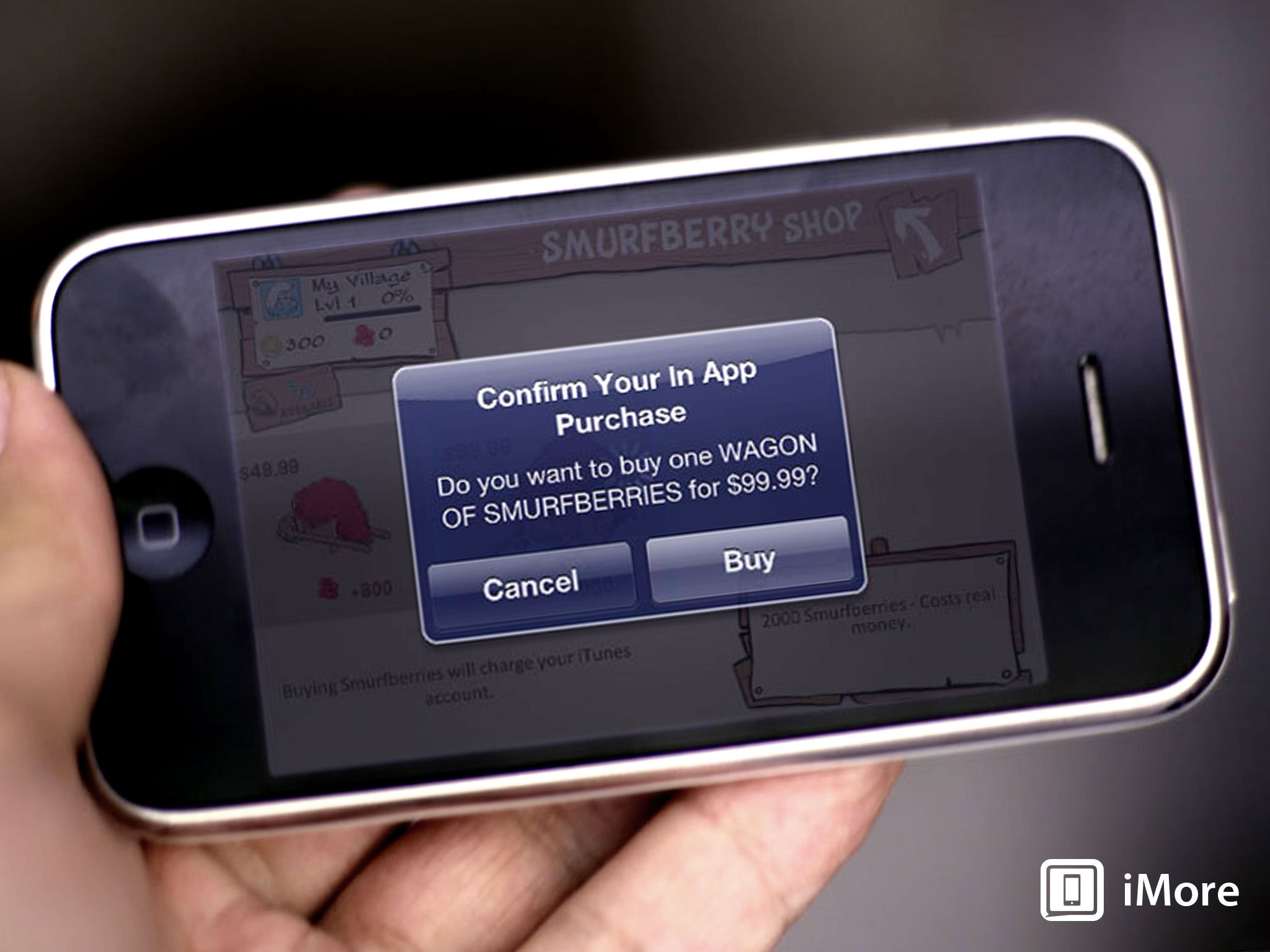
The App Store might have launched in 2008, but it didn't stop there. At the Apple iPhone OS 3.0 preview event, held in March of 2009, the iPhone and all its apps, first and third party, got copy and paste, Spotlight search as an ersatz secondary app launcher, and access to the dock port. Among 1000 other new and improved API, the previously announced push notification service was also re-introduced, which wasn't multitasking but would enable whole classes of apps to be more useful than previously possible. Arguably, however, the most transformative new feature in iPhone OS 3.0 was, for good and ill, in-app purchase (IAP).
Growth continued as well. By the end of September the App Store had hit 85,000 apps and 2 billion-with-a-b downloads. By May the App Store had expanded to reach 90 countries. And by June of 2010 the iPad had launched, 225,000 apps were available - 11,000 iPad-specific - with over 5 billion downloads and over $1 billion in payments made to developers.
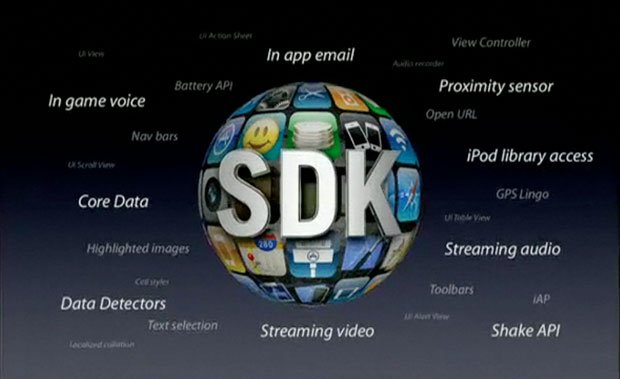
In-app purchases and the sum of all compromises
Downward price pressure hit the App Store almost immediately. $5 and $10 were common prices in 2008, but those prices quickly plummeted. The reasons for this were trifold:
- Apple wants to keep things simple, so they compromised on features. Apple does not allow for trials or demos on the App Store, which means all purchases are for all intents and purposes, up-front, as is, and mostly sight-unseen when it comes to the true, full product experience.
- Buyers want to avoid risk and expensing any more money than they have to, so they compromised on buying apps they might otherwise enjoy. Since there are no trials, absent urgent and immediate need or factors like addiction or ego-gratification, most people won't spend any significant amount of money on apps.
- Developers need to sell apps, so given the previous two realities, they compromised on money by holding sales, dropping prices, or trying alternate business models.
So we ended up with the sum of all those compromises: apps we can't try before we buy, so we don't buy them until they go on sale, their price drops, or a free alternative comes up.
App Cubby's David Barnard watched the trend:
In July 2009 the average price for games was $1.39 and all apps combined averaged $2.58. Today it's $1.01 for games and $2.12 for all apps. Prices do tend to drop in a free market as competition, increased efficiency, economies of scale, and other factors come into play, but I still contend that Apple's policies and the design of the App Store itself initiated and even accelerated the race to the bottom. It's clear to me in hindsight that this was either Apple's intent, or at least something they didn't actively discourage. To Apple, apps are merely complements to their highly profitable hardware sales. And as Joel Spolsky posited, "All else being equal, demand for a product increases when the prices of its complements decrease."
instead of going the traditional route and starting to offer upgrades, trials, etc. Apple introduced in-app purchases.
However, Apple still needed to earn enough revenue from their 30% cut to run the App Store at break-even levels or above, and developers needed to find enough value in iOS as a platform to support it. So, instead of going the traditional route and starting to offer upgrades, trials, etc. Apple introduced in-app purchases. Initially Apple enforced a policy of "free apps stay free", ostensibly to prevent customer confusion and bait-it-switch sales tactics. Eventually, however, in-app purchases were extended to all apps, paid and free alike. Likely, again, because Apple and developers need enough revenue to grow the platform, and too many free and cheap apps, with no ability to generate revenue, threaten that growth.
The idea was that developers could offer smaller amounts of initial content and then up-sell additional content, and users could enjoy lower upfront prices and buy only the features they wanted.
Master your iPhone in minutes
iMore offers spot-on advice and guidance from our team of experts, with decades of Apple device experience to lean on. Learn more with iMore!
In-app purchases followed the same 30% agency model as the rest of Apple's App Store agreement. Thst made it financially impossible for apps like ebook readers to use it (30% to Apple and 70% to publishers left nothing for existing middlemen).
Yet once again, we told developers we wouldn't pay to remove ads or to buy extra levels. We could tolerate ads, and limited functionality was just fine. Independent developers need to make money to feed their children. Large developers needed to make money to keep making apps.
So free apps, where users became the product sold to advertisers, and freemium apps, where purchases were programmed like casinos, began to grow.
Turns out most of us won't pay $1 for a great app, but we'll give up the contents of our messages for a free client and we'll pay $99 in IAPs to have a better looking hut or farm or business or than our friends and fellow gamers.
Most of us won't pay $1 for a great app, but we'll give up all our web data for a free browser or pay $99 in IAPs to get back to racing or fighting or crushing candy as quickly as possible.
Not every app and not every developer, but enough to become noticeable, and noticeably annoying.
Graham Spencer, writing for MacStories, explored the phenomena:
If we could go back to day one of the App Store and compare the iOS landscape to what it is today we would find quite a striking difference. The market has matured and expanded substantially, to the point where it is close to a perfectly competitive market. This reality has meant that prices have fallen significantly to where most apps are now free or on the lowest pricing tier of $0.99. To make these kind of prices sustainable, a number of different pricing strategies have emerged – IAPs are playing a big part in the strategy for many developers, allowing them to discount the initial entry cost of the app and then make up for it in later IAPs. This is somewhat of a classic form of price discrimination, specifically a two-part tariff, allowing developers to charge different prices to different consumers and hopefully extract the maximum amount of surplus from the consumer and transfer it to the developer at a later stage through IAPs. To maximise the willingness of consumers to pay for these IAPs, another strategy sometimes comes into play — the idea of designing games to increase their addictiveness and thus make demand inelastic. Inelastic demand will mean consumers will be more willing to consume those IAPs.
In response to concerns and controversies, especially those involving children making large in-app purchases without their parents' knowledge, Apple added a Settings switch to disable them, and switched to requiring a password for any in-app transaction, at any time.
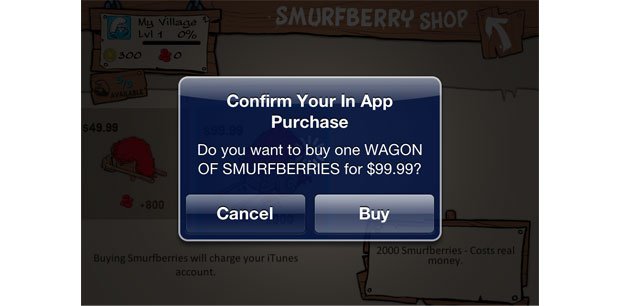
In March of 2010, Apple also created a highly specialized form of iTunes Gift Card -- Gift this App. App gifting is national only (i.e. U.S. App Store users can only gift to other U.S. App Store users) but it did provide greater purchasing options.
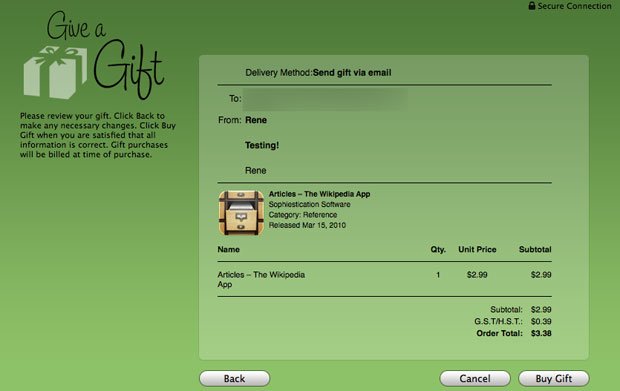
Putting the gross into Top Grossing
In September of 2009, Apple added a Top Grossing apps list to the existing Top Free and Top Paid apps. The idea seems to have been to give a break to higher priced apps, which were pushed out of the Top Paid apps list by $0.99 games.
Top Grossing essentially became Top Freemium (or Paymium) apps.
It worked at first, with higher priced turn-by-turn navigation apps, among others, dominating the new chart. Unfortunately, in-app purchases began to count, and freemium apps soon took over the charts completely.
Top Grossing essentially became Top Freemium (or Paymium) apps. That further increased downward price pressure by once again rewarding apps with a low (or no) up-front cost.
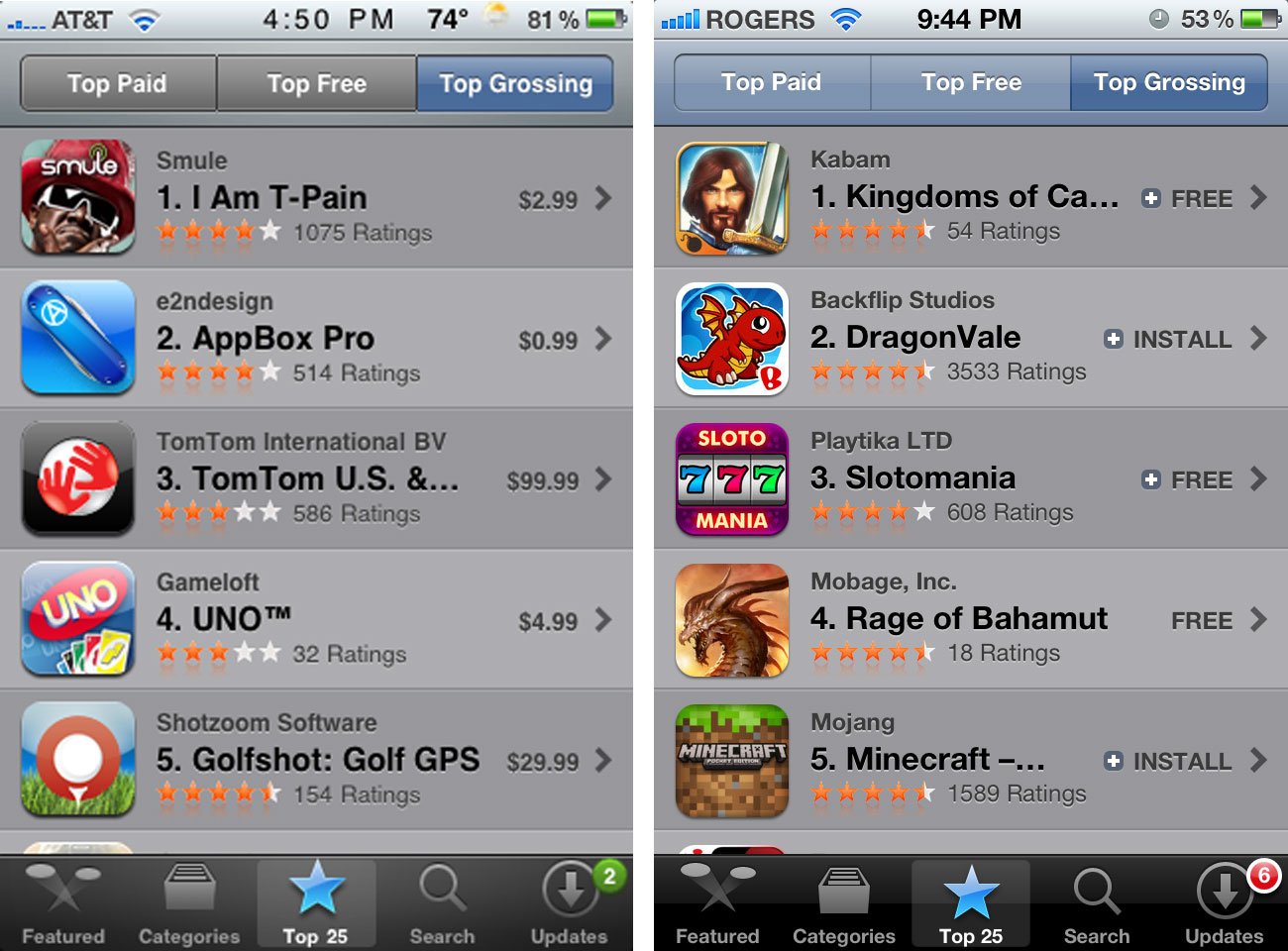
From apps to accessories
With iPhone OS 3.0, Apple also crossed the chasm between their app and accessory ecosystems for the first time. Developers could make apps that talked with peripherals over the then-30-pin Dock connector, allowing the iPhone to become a powerful screen and interface for a new generation of gear.
While various medical, mechanical, and other marvels were shown off, very little shipped immediately. Over the years, however, healthcare products, scientific instruments, and other accessories have slowly trickled out.
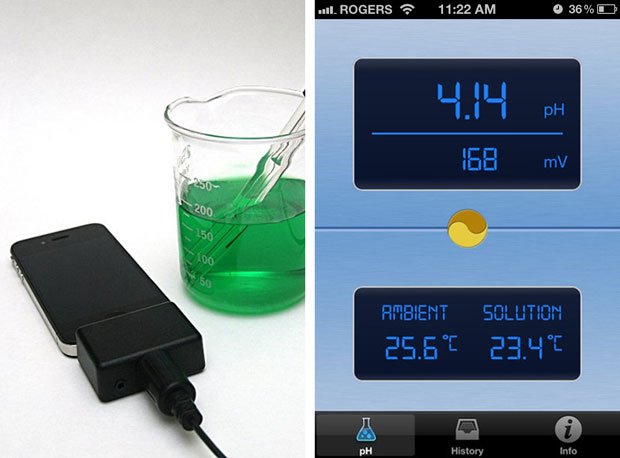
You've got messages!
Push notifications -- a service where Apple would collect and relay popup, badge, and sound alerts between a developer's server and the iPhone -- was originally announced for iPhone OS 2.1 but was subsequently delayed and announced again as part of iPhone OS 3.0.
While not providing traditional multitasking, they did allow a new class of apps to function for the first time on the iPhone. Everything from instant messaging and twitter clients to breaking news and even games took advantage of them.
The experience wasn't great, since notifications were still model and it took time for apps to refresh after you launched them anyway, but it was a start.
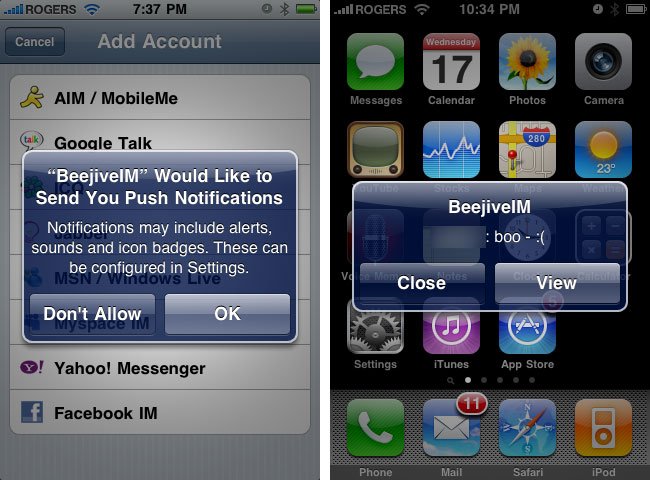
The iPad App Store
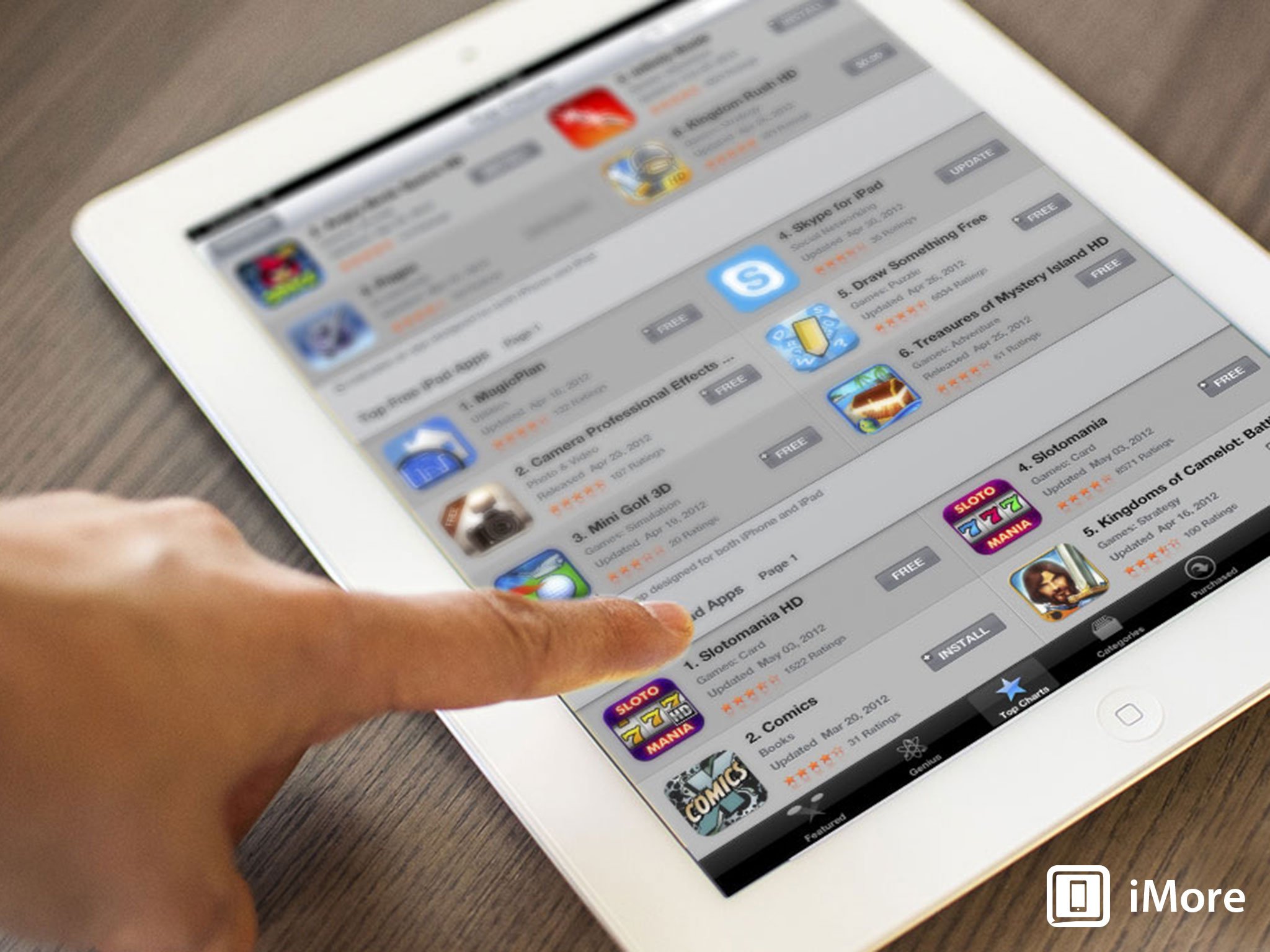
March 2010 saw Apple introduce a whole new class of iPhone OS device -- the iPad. It shipped with iPhone OS 3.2, a version the iPhone never received, and it caused Apple to bifurcate the App Store.
While the iPad could run iPhone apps in 1x or 2x mode, the iPad could also run purpose-built tablet apps. Developers could either make apps uniquely for the iPad, make separate apps for iPhone and iPad, or make universal apps that contain both iPhone and iPad interfaces and run on both.
So far, iPad apps have typically retained higher price points than their iPhone equivalent.
Apple set the price of their own iWork for iPad apps at $10, and kept them that way. So far, iPad apps have typically retained higher price points than their iPhone equivalent.
Many developers, especially game developers, have chosen not to go with universal apps either. They see separate iPad versions as an important additional revenue source.
So, the App Store's second year ended with more options than its first, but with just as many challenges, if not more, for Apple, developers, and customers alike.
- App Store Year Zero: How unsweetened web apps and unsigned code drove the iPhone to an SDK
- App Store Year One: Shocking successes, game-changers, and unpredictable pain
- App Store Year Three: Mild-mannered multitasking, iAD, and getting Game Center
- App Store Year Four: Subscriptions, iCloud offer fantastic new services... and controversies

Rene Ritchie is one of the most respected Apple analysts in the business, reaching a combined audience of over 40 million readers a month. His YouTube channel, Vector, has over 90 thousand subscribers and 14 million views and his podcasts, including Debug, have been downloaded over 20 million times. He also regularly co-hosts MacBreak Weekly for the TWiT network and co-hosted CES Live! and Talk Mobile. Based in Montreal, Rene is a former director of product marketing, web developer, and graphic designer. He's authored several books and appeared on numerous television and radio segments to discuss Apple and the technology industry. When not working, he likes to cook, grapple, and spend time with his friends and family.
